- Administrator
- Albums and Singles
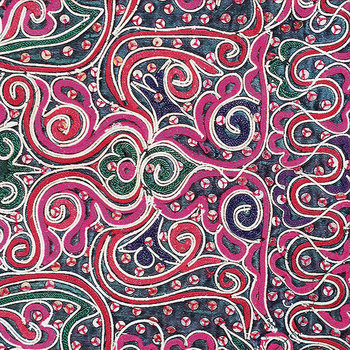
The prolific Kink Gong (aka Laurent Jeanneau) returns in a unique duet with one of the most prominent artists of the Chinese avantgardist scene Li Daiguo. Kink Gong and Li Daiguo first met in Chengdu (capital of Sichuan Province, China) while playing the same night at the Jahbar music venue.
A few months later, as they become neighbors in Cai Cun, a village near the old town of Dali (Yunnan), Kink Gong begins recording Daiguo playing Pipa, Cello and Zheng. He then proceeded to deconstruct these recordings while adding voices that he mainly recorded in Yunnan Province. This fantastic combination of field recordings, experimental folk melodies and electronic treatment leads us to a fourth underground universe reminiscent of Jon Hassell's finest hours.
More information can be found here.
Read More
- Administrator
- Albums and Singles
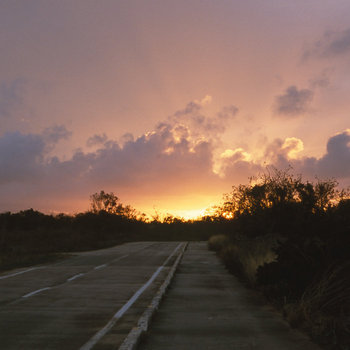
Future Predictions is a set of ensemble pieces made with tape loops, from digital and acoustic instruments, field recordings and foley sounds. With a focus on introspection and imagination, each piece begins with all layers playing, with minimal additional long-term structural development in order to maintain a state. Each piece of music is accompanied by photos, and text written with a shifting tense.
As a follow-up to 2018's Memory Repetitions which was based on memory and the interpretation of it over time, Future Predictions is instead based on the idea of future situations, and should be seen as a meditation on future events.
All music was recorded with high-quality recycled reel-to-reel tape. It has been mastered by Stephan Mathieu at Schwebung, and designed by Rutger Zuydervelt.
Limited edition, custom-made clamshell box, 4xCDs in pocket sleeves, and 16-page booklet. Digital version includes PDF booklet.
More information can be found here.
Read More
- Administrator
- Albums and Singles

The first LP from Scorn since 2010's Refuse; Start Fires, Cafe Mor is Mick Harris in his happy place. Which just happens to be in studio, demolishing all standards and rules for electronic bass music, and embodying the darkest, deepest sound in dub. Cafe Mor takes risks outside of the conventional Scorn apparatus and with these risks come substantial rewards.
The album is comprised of powerful dub excursions, from the deep dark dank of the front two tracks "Elephant" and "The Lower The Middle Our Bit," and gaining steam towards the ultraviolence of "Mugwump Tea Room" to "Never Let It Be Said" to the CRUSHING DEATH KICK of "Who Are They Which One." A quick drive under the lights with a lasered out snare on "Dulse," then we come across the appearance from Sleaford Mods frontman, Jason Williamson, on the standout track on the LP, "Talk Whiff."
Cafe Mor culminates in the all-in-one dub affair "SA70," letting rip all the new mixer and FX techniques of Harris' most recent incarnation of Scorn. The album is the official soundtrack for all smoked-out backroom deals, situations and arrangements, cancelling all small tours, and mongoose rhinocharging the bass to level 24.
More information can be found here.
Read More
- Administrator
- Albums and Singles
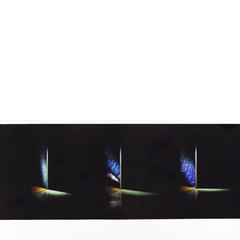
"Raime strain at the harness in four cuttingly sharp mutations of Afrobeats, Footwork, and Jungle with scintillating results on the 2nd release on their RR imprint.
Where the London duo’s 2018 EP and RR debut We Can't Be That Far From The Beginning evoked a meditative mood from the info overload of their home city that left acres of space to the imagination, the Planted EP rejoins the dance with four tracks that icily acknowledge strong influence from Latin American and Chicago footwork styles in a classically skooled mutation of hardcore British dance music.
In four fleetingly ambiguous dancefloor workouts they carry on a conceptual theme exploring the digital subconscious with persistently invasive, alien ambient shrapnel - half-heard voices, aleatoric prangs, and tag-covered signposts - woven into and thru their tightly coiled and reflexive drum programming.
Uptown, "Num" flexes tendons and hips like a Leonce riddim that danced all the way from NOLA and ATL to the wintery dawn of a LDN warehouse, while the lip-biting tension of minimalist 160bpm jungle/footwork patterns and jibber-jawed vocals in "Ripli" suggests the Alien film's protagonist lost in a mazy rave space, chased by H.R. Giger-designed face huggers (or gurning energy vampires). Downtown "Kella" then catches them on a grimy dubtech bounce, cocked back and straining at the harness, before "Belly" shuts down the dance with invasive, demonic motifs exploding over dark blue chords and palpitating jungle subs with impeccable darkside style."
-via Boomkat
Read More
- Administrator
- Albums and Singles

On September 12, 2018 Sonic Youth co-founder Lee Ranaldo and guitarist extraordinaire Jean-Marc Montera joined Maurizio and Roberto Opalio in their hometown Torino, Italy, to celebrate the 20th anniversary of the brothers' visionary project My Cat Is An Alien. That evening the stage of Alfa Teatro—a liberty-style, historical theater built in 1928—hosted the live world premiere of this quartet, whose members already collaborated live and on records with each other during the years, yet never all the four together. The quartet live performance followed MCIAA's radical aesthetic of "instantaneous composition," where nothing is defined nor drafted prior to the act of music creation, and every sound and action is shaped around a higher-order scheme dictated by the empathy and synergy of the actual moment of enlightenment. The show was also accompanied by the projection of a brand new cinematic poetry dual film created by Roberto Opalio and previewed on the occasion, whose Super-8 film's relentless flickering and ascending motion worked "ad hoc" to match the music and body gestures of the performance, thus enhancing its transcendental power.
That night Maurizio Opalio (self-made double-bodied wooden string instrument, pedal effects, bell), Roberto Opalio (wordless vocalizations, bodhran, Alientronics, electric guitar, space toys), Jean-Marc Montera (table top guitar, pedals, little gong), and Lee Ranaldo (vocals, electric guitar, bells) moved through still unexplored and unheard music territories.
This music is a pure ecstatic revelation, a unique, powerful and spiritual experience all of its own. Listening to this album we are offered a true epiphany just as uniquely gifted genius improvisers/composers of the past would grace our ears and souls.
More information can be found here.
Read More
- Administrator
- Albums and Singles

Faitiche is delighted to present a new album by Andrew Pekler. Sounds From Phantom Islands brings together ten tracks created over the last three years for the interactive website Phantom Islands - A Sonic Atlas. With his 2016 album Tristes Tropiques, Pekler created a highly unique cosmos of ethnographic sound speculations. Sounds From Phantom Islands continues and simultaneously expands this concept: finely elaborated chordal motifs float like fog over fictional maritime landscapes. A masterpiece of contemporary Exotica.
Phantom islands are islands that appeared on historical maps but never actually existed. The status of these artefacts of European colonial expansion from the 15th to the 19th century oscillates between cartographic fact and maritime fiction. Sounds From Phantom Islands interprets and presents these imaginations as a quasi-ethnographic catalog of music and synthetic field recordings. The pieces on this album are based on recordings made for Phantom Islands - A Sonic Atlas, an online interactive map developed with cultural anthropologist Stefanie Kiwi Menrath.
More information can be found here.
Read More
- Administrator
- Albums and Singles
January 24, 2020, Unseen Worlds will release Robert Haigh’s new album Black Sarabande on LP/CD/Digital worldwide via Secretly Distribution. The first single “Ghosts of Blacker Dyke” will be released 12.06.2019 alongside the album announcement.
Black Sarabande expands upon pianist-composer Robert Haigh’s beguiling debut for Unseen Worlds with a collection of intimate and evocative piano-led compositions. Black Sarabande expands upon pianist-composer Robert Haigh’s beguiling debut for Unseen Worlds with a collection of intimate and evocative piano-led compositions. Haigh was born and raised in the ‘pit village’ of Worsbrough in South Yorkshire, England. His father, as most of his friends’ fathers, was a miner, who worked at the local colliery. Etched into Haigh’s work are formative memories of the early morning sounds of coal wagons being shunted on the tracks, distant trains passing, and walking rural paths skirting the barren industrial landscape.
The album opens with the title track — a spacious, plaintive piano motif develops through a series of discordant variations before resolving. On ‘Stranger On The Lake,’ sweeping textures and found sounds lay the foundation for a two chord piano phrase evoking a sense of elegy. ‘Wire Horses’ is an atmospheric audio painting of open spaces and distant lights. ’Air Madeleine’ uses variations in tempo and dynamics to craft the most seductively melodic track on the album. ‘Arc Of Crows’ improvises on a single major seventh chord, splintering droplets of notes as ghostly wisps of melodic sound slowly glide into view. ‘Ghosts Of Blacker Dyke’ is a melancholic evocation of Haigh’s roots in England’s industrial north — intermingling dissonant sounds of industry within a set of languid piano variations. ‘Progressive Music’ is constructed around a series of lightly dissonant arpeggiated piano chords which modulate through major and minor key changes before resolving at a wistful and enigmatic refrain. In ‘The Secret Life of Air’, a nocturnal, low piano line slowly weaves its way through the close-miked ambience of the room, nearly halting as each note is allowed to form and reverberate into a blur with the next. The ambitious ‘Painted Serpent’ calmly begins with drone-like pads and builds with the introduction of counterpoint piano lines and an orchestral collage of sound underpinned by a deliberate bass motif. ’Broken Symmetry’ and ‘Lady Lazarus’ highlight Haigh’s gift for blurring the line between dissonance and harmony - opaque piano portraits of moonlight and shadows glancingly evoke the impressionistic palettes of Harold Budd, Debussy and Satie.
Read More
- Administrator
- Albums and Singles
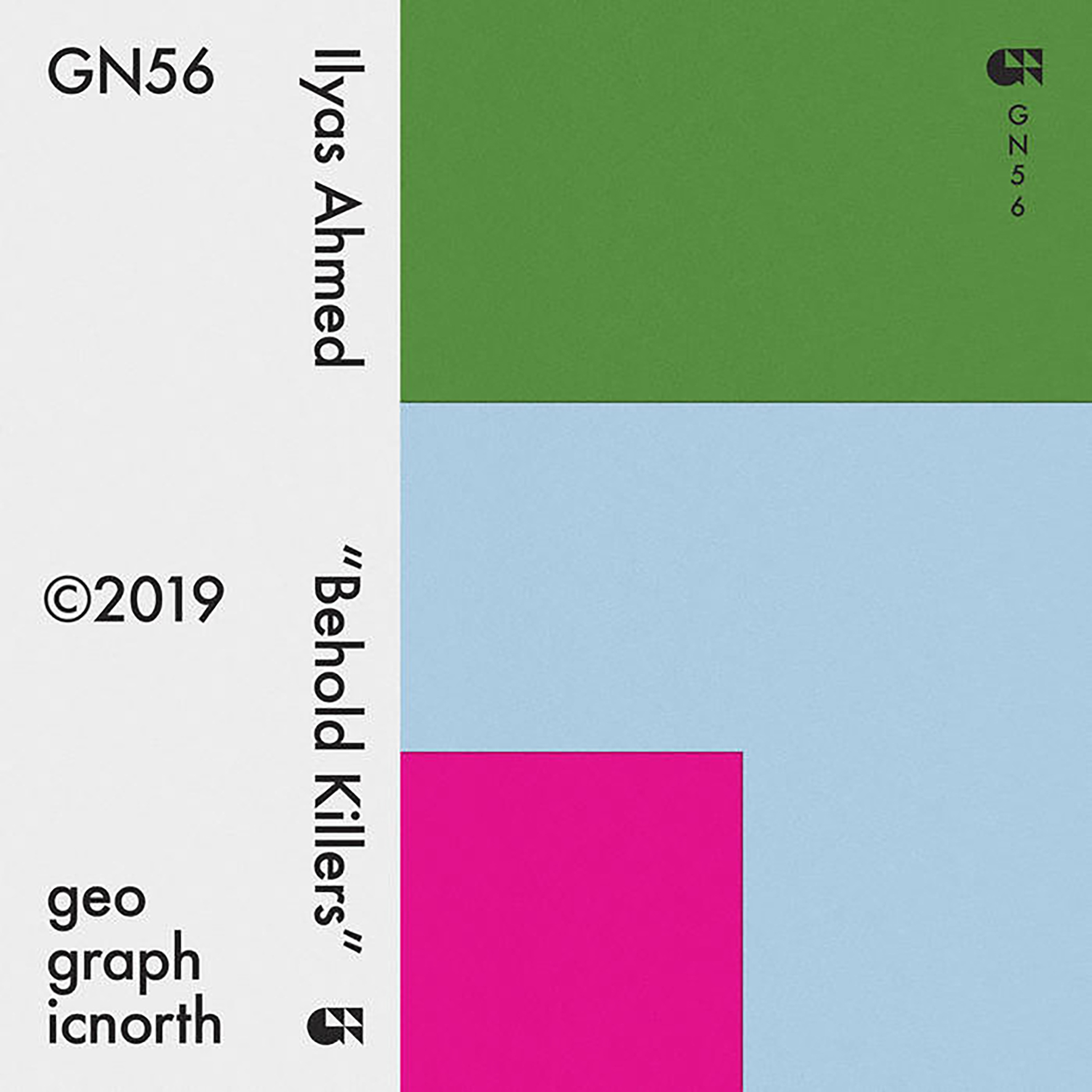 I have always found Portland’s Ilyas Ahmed to be an elusive and enigmatically unusual artist, though I have recently realized that I am basing much of that opinion on his 2005 debut (Between Two Skies). That album remains a cult favorite in some circles, as it exists in murkily melancholy and ghostly shadow realm between free folk and drone. The varied work that Ahmed has released in between that minor classic and this latest cassette has only made it more difficult to pin down his strange and shifting aesthetic, but it also feels as if no time has passed at all: Behold Killers returns once more to the blurry, diffuse gray area where structure, improvisation, drone, and experimentalism precariously coexist and bleed together. However, while the fluid approach to structure on this release is not a far cry from Ahmed's early days, the execution has improved considerably, as Behold Killers explore far warmer and more nuanced emotional territory than much of his previous work. I still find some elements of the album perplexing, of course, but it is anchored by a couple of excellent longform pieces.
I have always found Portland’s Ilyas Ahmed to be an elusive and enigmatically unusual artist, though I have recently realized that I am basing much of that opinion on his 2005 debut (Between Two Skies). That album remains a cult favorite in some circles, as it exists in murkily melancholy and ghostly shadow realm between free folk and drone. The varied work that Ahmed has released in between that minor classic and this latest cassette has only made it more difficult to pin down his strange and shifting aesthetic, but it also feels as if no time has passed at all: Behold Killers returns once more to the blurry, diffuse gray area where structure, improvisation, drone, and experimentalism precariously coexist and bleed together. However, while the fluid approach to structure on this release is not a far cry from Ahmed's early days, the execution has improved considerably, as Behold Killers explore far warmer and more nuanced emotional territory than much of his previous work. I still find some elements of the album perplexing, of course, but it is anchored by a couple of excellent longform pieces.
The first side of Behold Killers is devoted entirely to one of its strongest pieces, "Pass No Jazz."It also kind of an archetypal Ahmed composition in its unusual trajectory, as it opens as kind of a straightforwardly melodic classical guitar piece, yet gradually erases all traces of that original theme as it slowly blossoms into something quite different.Moreover, the path from the initial motif to the final destination in far from a linear one, as "Pass No Jazz" takes a series of detours that follow a kind of dream logic.Some of those detours are quite beautiful, such as the quavering, shimmering, and throbbing synth reverie that follows the disappearance of the acoustic guitar.After that fades, however, the piece becomes a sleepily tender vocal piece that unfolds over a simmering bed of guitar noise and synth drones.Gradually, however, sharper-edged swells emerge from the fog and cohere into swaying and swooning dance of sustained feedback-like tones.Then that dissolves to make way for a gently rippling final coda of wobbly, chorus-heavy arpeggios embellished with percussion that sounds borrowed from either a Tibetan Buddhist ritual or an ancient Japanese court.Throughout it all, I have no idea what is coming next and no ideas ever seem to overlap or repeat, which is a very strange and abstract compositional technique.On one level, it kind of sounds like five brief, unrelated pieces that have been loosely stitched together, yet they amount to a weirdly satisfying arc nonetheless.Still, I cannot shake the sense that at least two of those pieces could have been even better if they had been expanded and allowed to stand on their own.
To some degree, that approach pervades the entire album, though the number of discrete movements within each piece varies a bit.For example, the following "Metal Freedom" opens with an evocative and textured field recording of birds that swells into a very cool organ drone interlude, but the bottom then drops out completely and the piece re-emerges as a disorienting mélange of synth-based ambient, wordless vocals, and gnarled fragments of buzzing, distorted guitar.It feels a lot like some kind of sublime religious ritual being antagonized by large, extra-dimensional bees, which I suppose is a neat achievement.The following "Mad Love" is a comparative (and brief) aberration though, as Ahmed uncharacteristically sticks to just a single theme (woozy arpeggios mingled with hazy drones) for its three minutes, but it is mostly just a palette cleanser for the excellent closer ("Wild Violet").Happily, "Wild Violet" also holds onto a single theme for its entire duration, as it unfolds as a warm reverie of languorously tumbling and intertwining arpeggios over a lazily shifting and smoldering synth drone.As it progresses, however, more structured melodies start to take shape and moaning, buzzing swells billow up from the underlying drones.It is an absolutely gorgeous and perfectly focused piece that displays incredible patience, nuance, and lightness of touch.I could have happily listened to an infinite loop in this vein, but Ahmed instead abruptly and unceremoniously just cuts the piece off at the 8:56 mark.That was a very curious decision indeed.
Given that jarring conclusion to the album's most perfect piece, I definitely feel like I am no closer to understanding how Ahmed's mind works, yet Behold Killers has at least brought me much closer to understanding the appeal of what that mind can produce.If I did understand where Ahmed was coming from, I would hypothesize that pieces like "Pass No Jazz" are simply collages of unrelated improvisations and unfinished ideas or that he has some perverse urge to aggressively deconstruct and subvert all of his best motifs in service of a fragmented, non-linear flow.The focused and lovely "Wild Violet," however, seems to indicate that Ahmed is perfectly happy to linger on a single theme sometimes (until he runs out of tape, anyway).Given that, there is definitely an element of exasperation to this album, but I can only be exasperated if I actually like something in the first place and I do like this album: Ahmed does an excellent job combining biting, ravaged textures with passages of tender, fragile beauty.The catch is just that those delightful sounds and lovely interludes never quite stick around long enough to amount to a complete, fully formed piece.I have no idea if that is a mere stylistic idiosyncrasy or a sign that Ahmed's compositional talents are not yet on the same level as his ideas and I think I will just have to resign myself to that nagging ambiguity (if I haven't figured him out after 15 years, odds are strong that I never will).In any case, I enjoyed this tape–Behold Killers is a puzzling and flawed experience at times, but it is a frequently compelling one as well.
Samples can be found here.
Read More
- Administrator
- Albums and Singles
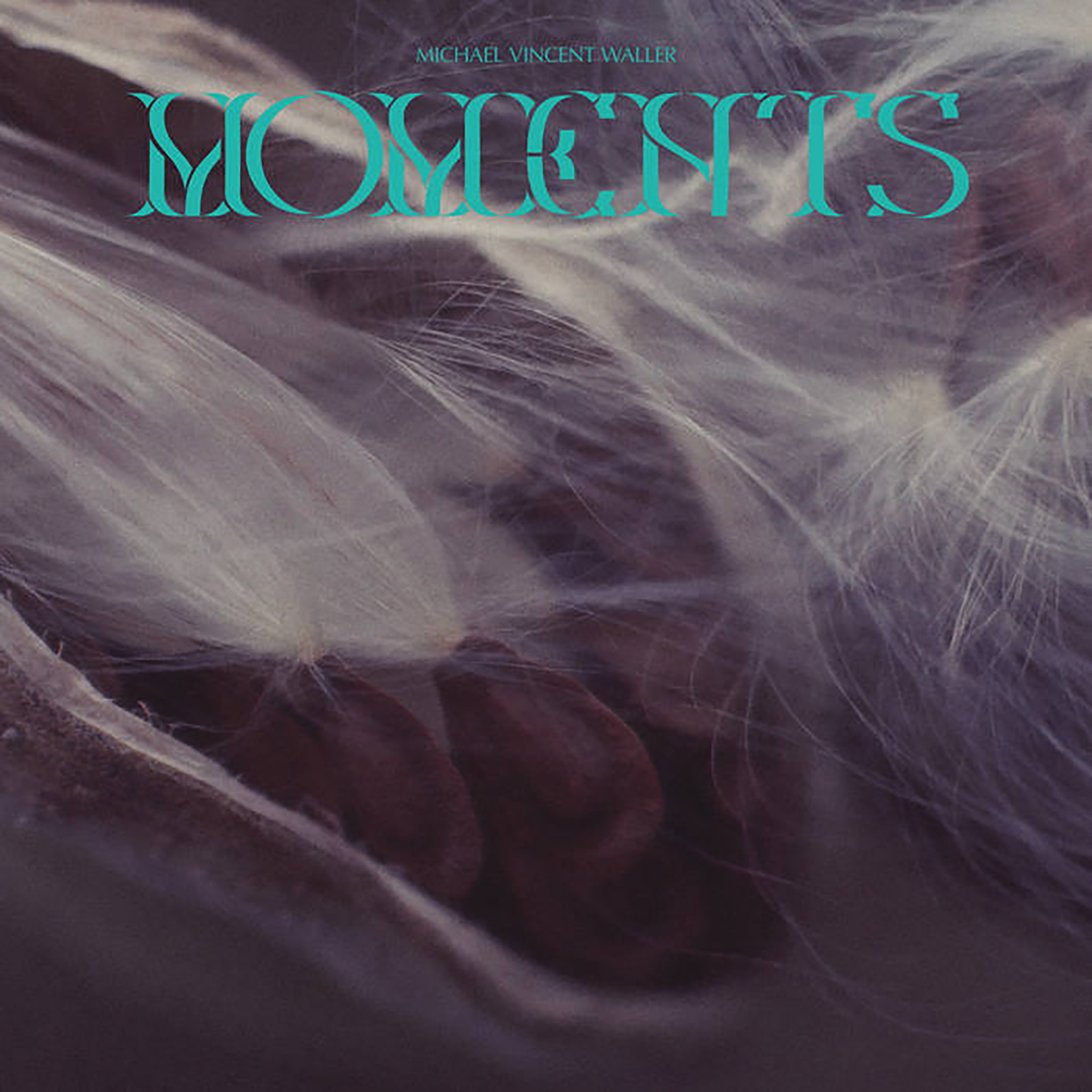 This NYC-based composer has long been a bit of a curious enigma to me, as he seems to travel primarily in experimental music circles, yet seems unwaveringly devoted to making very traditional and melodic classical music. In a quietly subversive way, however, composing simple, elegantly lovely piano pieces in 2019 is a radical act in its own right. That is where Waller (mostly) arrives on Moments, his third album and most minimal, distilled statement to date. That approach suits him well, though I am not necessarily sure he needed go more minimal than he did with 2017’s excellent cello/piano album Trajectories (released on Sean McCann’s always interesting Recital Program imprint). To some degree, Moments feels less like complete statement than its predecessor, resembling instead a kind of expertly curated mixtape of different piano composers unified by a knack for lyrical melodies and a sort of warm, wistful Romanticism. Some are among the most beautiful pieces that Waller has composed to date though, which makes Moments akin to a strong (if improbable) "singles album" of sorts. At times, it also feels like the beginnings of a major creative leap forward.
This NYC-based composer has long been a bit of a curious enigma to me, as he seems to travel primarily in experimental music circles, yet seems unwaveringly devoted to making very traditional and melodic classical music. In a quietly subversive way, however, composing simple, elegantly lovely piano pieces in 2019 is a radical act in its own right. That is where Waller (mostly) arrives on Moments, his third album and most minimal, distilled statement to date. That approach suits him well, though I am not necessarily sure he needed go more minimal than he did with 2017’s excellent cello/piano album Trajectories (released on Sean McCann’s always interesting Recital Program imprint). To some degree, Moments feels less like complete statement than its predecessor, resembling instead a kind of expertly curated mixtape of different piano composers unified by a knack for lyrical melodies and a sort of warm, wistful Romanticism. Some are among the most beautiful pieces that Waller has composed to date though, which makes Moments akin to a strong (if improbable) "singles album" of sorts. At times, it also feels like the beginnings of a major creative leap forward.
One bit of intriguing trivia about Michael Vincent Waller is that he seems to be the only person who has ever studied with La Monte Young that did not become a drone artist, become obsessed with Just Intonation, build bizarre installations, or compose radical operas.Instead, he has devoted himself to the "Western classical music tradition in its most archetypal forms," which is a bit like discovering that Norman Rockwell apprenticed for years with Salvador Dali or Marcel Duchamp.Curiously, Waller also studied with Bunita Marcus, which seems to have left more of a stylistic impact: one of the album's brief vibraphone pieces ("Love III. Images") favorably recalls Morton Feldman's penchant for queasily dissonant harmonies and lingering decays.For the most part, however, Moments seems most stylistically indebted to Erik Satie, as that name will be invariably evoked for all eternity whenever a piano composer is drawn towards simplicity and melody.Unseen World's description of the album presciently anticipates that comparison, but notes that Waller's more Romantic and emotionally driven work diverges from Satie's "blank canvas" approach.I do not necessarily agree, as I find some of Satie's work to be incredibly moving, but it is fair to say that Moments is a very purposeful, heartfelt, and melodic collection of pieces that could not be mistaken for ambient or "furniture music."At its heart, Moments is kind of an impressionistic diary of warm or bittersweet memories shared through a series of evocative vignettes.Every piece on the album seems to be inspired by a specific person or moment from Waller’s life and the album is anchored by two multipart suites entitled "Love" and "Return From LA."
Any attempt to make stylistic generalizations about Waller’s aesthetic on Moments beyond "simple" and "melodic" is a fundamentally doomed endeavor though, as the album is divided into tenderly lovely piano miniatures (played by R. Andrew Lee), impressionistic vibraphone interludes (played by William Winant), and outliers that elude either category.Uncharacteristically, I am most drawn to Waller's more straightforward classical fare.In particular, I love the lazily tumbling "For Papa," as the underlying arpeggios seem to hang in a state of suspended animation as the melody slowly cascades and ripples.Elsewhere, both "Return From LA-IV" and "Nocturnes-No. 1" feel like archetypal Satie melancholia, but either would likely be ranked Satie's finest work if he had written them himself.Much less understated is "Jennifer," which is an elegantly controlled storm of dramatic intensity.More importantly, Waller does some beautiful things with lagging, stumbling melodies that fleetingly break free from the central pulse to take on a life of their own."Return From LA-I" is yet another highlight, albeit a more Impressionism-inspired one, evoking a flickering, sepia-toned film reel of a magical realist Paris from a hundred years ago.For the most part, I tend to prefer it when Waller keeps things understated, which he does for most of the album.There are some exceptions though.The best of them is the closing "Bounding," which gradually blossoms into an impassioned crescendo of descending melodies that streak across the underlying chord progression like falling stars.
As much as I like to think I have developed a deep understanding and appreciation for the nuances of music, there are still some things that seem like absolute sorcery that I will never fully comprehend.For example, I could never replicate a good Merzbow album even if I had infinite time and all of the same gear.Similarly, I will never grasp how someone like R. Andrew Lee is able to look at some pieces of paper and make it feel as though he is effortlessly and fluidly conveying the delicate emotional shading and unusual timing flourishes that Waller had conjured up in his head.More specifically, I do not understand how some of the melodies in "Jennifer" could possibly be notated and replicated, as they seem to wind like tendrils of smoke independent of time signature or beat.As such, "Jennifer" and "For Papa" are the pieces that fascinate me the most on Moments, as Waller is able to make melodies dance and twist is a way that feels sensuous and natural (a very different achievement than dexterously playing with unusual time signatures in an ostentatious way).Those pieces are also the ones that make me feel like I have only seen the beginnings of what Waller’s vision will ultimately evolve into, as he has absorbed a impressive array of eclectic and radical influences, but they are only slowly, subtly, and seamlessly being assimilated into an aesthetic that is fundamentally grounded in melody and increasingly focused on making a direct, human connection.While it is no secret that I love wild ideas and ambitious experimentation for their own sake, the best albums tend to be the those that manage to tether those impulses to a center that has soul and strong hooks.To his credit, Waller seems to intuitively grasp that, though for now his feet are planted mostly on the side of melodicism.
Samples can be found here.
Read More
- Administrator
- Albums and Singles
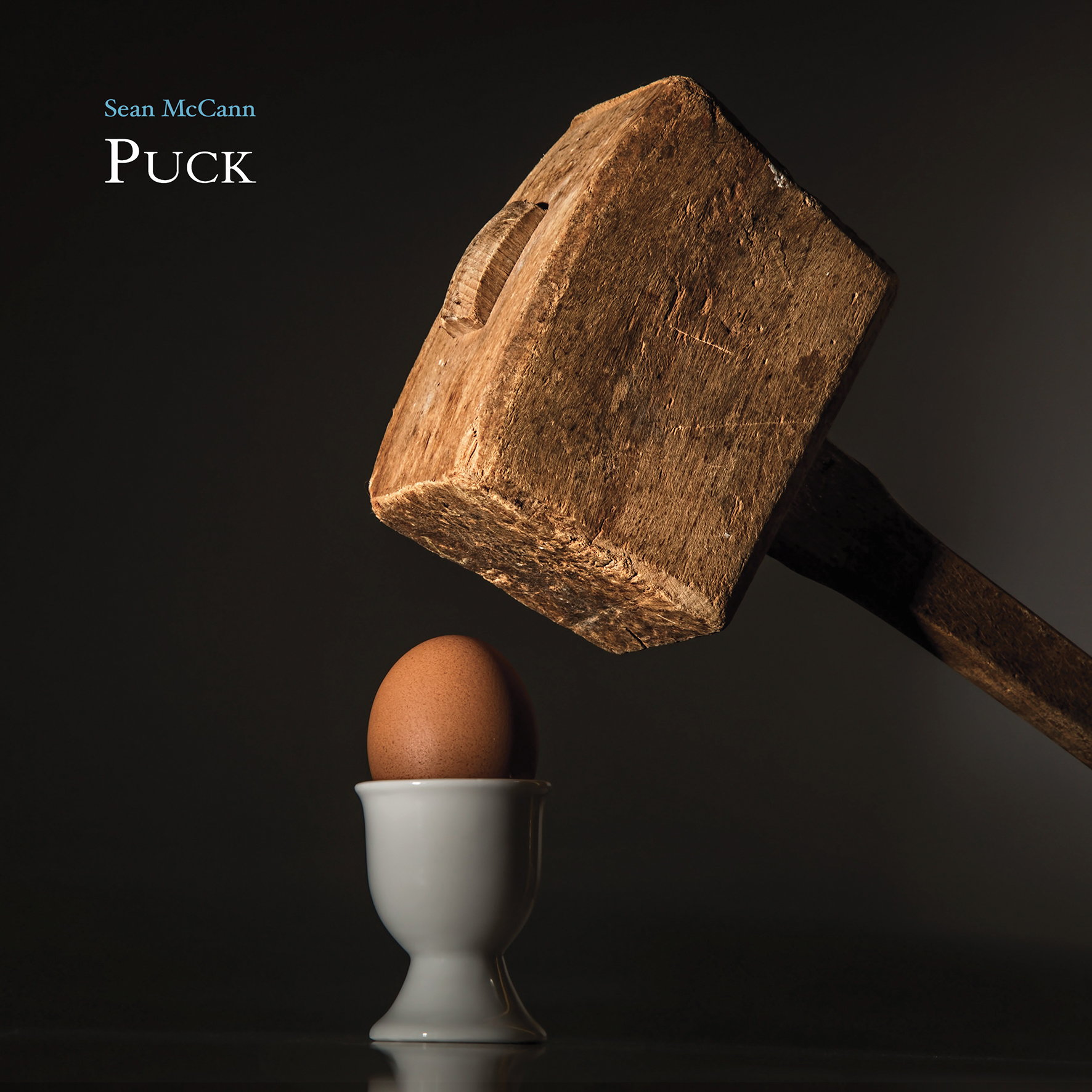 This latest release from Sean McCann picks up right where 2018's excellent Saccharine Scores left off, striking a lovely balance between stretched, blurred, and fragmented orchestral music and distracted, surreal snatches of spoken word. In the best way, McCann's recent work feels like eavesdropping on his subconconcious mind (though it is thankfully a subconscious mind with all of the boring bits edited out). Much like its predecessor, Puck is a series of warmly beautiful reveries swirling with mental detritus that feels meaningful, yet those impressions elude any connections or context that might illuminate what that meaning possibly could be. As a result, Puck is frequently quite moving in a profoundly ineffable way. McCann proves himself to be remarkably adept at mimicking how memory works, as we do not get to choose what lingers and what disappears: mundane scenes, fleeting impressions, and legitimately important moments all jumble together in a weird stew and there is no predicting what will bubble up to the surface next (or why). In lesser hands, an album in this vein would probably feel like a self-conscious attempt to blow my mind with wild surrealist juxtapositions, but McCann largely gets the tone and the execution exactly right: Puck is a beautifully casual, organic, fragile, and intimate album. It is quite possibly McCann's best as well.
This latest release from Sean McCann picks up right where 2018's excellent Saccharine Scores left off, striking a lovely balance between stretched, blurred, and fragmented orchestral music and distracted, surreal snatches of spoken word. In the best way, McCann's recent work feels like eavesdropping on his subconconcious mind (though it is thankfully a subconscious mind with all of the boring bits edited out). Much like its predecessor, Puck is a series of warmly beautiful reveries swirling with mental detritus that feels meaningful, yet those impressions elude any connections or context that might illuminate what that meaning possibly could be. As a result, Puck is frequently quite moving in a profoundly ineffable way. McCann proves himself to be remarkably adept at mimicking how memory works, as we do not get to choose what lingers and what disappears: mundane scenes, fleeting impressions, and legitimately important moments all jumble together in a weird stew and there is no predicting what will bubble up to the surface next (or why). In lesser hands, an album in this vein would probably feel like a self-conscious attempt to blow my mind with wild surrealist juxtapositions, but McCann largely gets the tone and the execution exactly right: Puck is a beautifully casual, organic, fragile, and intimate album. It is quite possibly McCann's best as well.
It is very tempting to describe Puck as essentially Saccharine Scores, Vol. II, as the two albums are very similar stylistically and even feature some of the same source material.However, that glib description would not do justice to McCann's subtle and ingenious evolution over the last year, as Puck feels like an even deeper plunge into his subconsciousness and soul, blithely cannibalizing and recontextualizing older work into something compellingly novel and even more poignant.That is especially true of the album's first half, as the three-part "Folded Portraits" suite is primarily sourced from rehearsal recordings made for "Portraits of Friars" in Stockholm last year.Collaged into those recordings, however, are a number of other pieces ranging from 2018's "A Folded Rose" to snatches of much earlier recordings dating from as far back as 2008.In essence, McCann has seamlessly blurred together his solo home recordings with his recent ensemble compositions to weave something hauntingly elusive, shifting, and emotionally resonant. The album's scrawled, handwritten liner notes provides a loose road map to unraveling which earlier pieces surface in which new context, but the blurring of lines in these collages is so seamless that the lineage of any individual fragment is more or less irrelevant: all of those disparate threads decisively belong here now (it just took some of them many years to reach their proper destination).
While the opening "Nightfall" beautifully transforms from a haze of echoing voices and sensuously swelling strings to a swirling, richly textured crescendo of string loops and twinkling piano, the strongest pieces on the album are the more longform works "Broth" and "Puck."The former falls into the "Portraits of Friars"-derived suite and gradually blossoms from a delicate piano piece into a swooning, heavenly crescendo of massed strings and female voices.Further enhancing the experience are some very feral-sounding vocals from McCann himself, which he describes as "recordings of me gagging and yowling in my car."While that admittedly sounds jarring on paper, it is actually perversely beautiful in execution, as McCann weaves a gorgeous and immersive spell from a host of "false starts and stops and tests," yet makes it seem like all that beauty is a merely a veil concealing something far more ragged and primal.
"Puck," on the other hand, is a more text-based affair featuring Lia Mazzarri that seems primarily inspired by found texts about Fabergé eggs (as well as eggs in general).The underlying music, however, has earlier origins and McCann describes the new piece as "a mold growing on top of a quintet I wrote called 'Vilon.'"Like "Broth" before it though, it is essentially a lovely tour de force of McCann's production genius, as achingly gorgeous strings, voices, and tinkling pianos endlessly and organically cohere, dissolve, and re-cohere into new shapes.In fact, "Puck" may very well be a new high water mark for McCann's vision, as I cannot overstate how skillfully the various threads are woven together: it is like wandering through a maze of memories where a dozen different threads are constantly bleeding together or drifting off in compelling new directions.Normally, pieces built on such shifting sands do not work particularly well, but this one is a striking exception, as slow-moving string swells provide a grounding that precariously holds it all together.
While I have enjoyed quite a lot of McCann's work over the years, it is hard to see Puck as anything other than a culminating achievement where all of his strengths are finally aligned at once.I am also quite impressed at the amount of reflection and merciless self-critique that must have been necessary to get to this place.Every facet of this release has some significant perils and McCann somehow managed to nimbly avoid all of them: orchestral works can be too mannered and pretty, found/cut-up text experiments can be self-indulgent and soulless, and ambitiously multi-layered production feats can feel bloodless and overwrought.With Puck, however, those various pieces are intertwined in a way that feels natural, vulnerably human, and improbably unpredictable and spontaneous.I suspect that using older work as a canvas for newer work was the innovation that allowed all this to happen as it did, as revisiting "finished" recordings liberated McCann from any perfectionist tendencies he may had during the original composition: once something is already done, there is no pressure to get everything right anymore and the various elements can be playfully deconstructed until something new emerges naturally.As such, Puck’s album cover is quite a poetic and apt representation of the album’s aesthetic: if the egg is viewed as a stand-in for an actual Fabergé egg and that Fabergé egg represents McCann's meticulously crafted recent work, Puck is what results when the shattered fragments are lovingly glued back together into an imperfect yet even more beautiful new form.
Samples can be found here.
Read More
- Administrator
- Albums and Singles
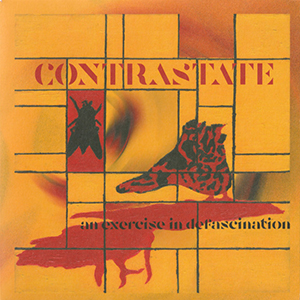 Functioning as a preview for a work-in-progress record, the two songs that make up An Exercise in Defascination (which will appear as different mixes on the album proper upon its completion) herald the theme of deconstructing giallo films that will appear there. Drawing from film soundtracks, as well as the overall themes of that specific style of horror film, Contrastate distill those very essences into a brief teaser of terror and surrealism perfectly.
Functioning as a preview for a work-in-progress record, the two songs that make up An Exercise in Defascination (which will appear as different mixes on the album proper upon its completion) herald the theme of deconstructing giallo films that will appear there. Drawing from film soundtracks, as well as the overall themes of that specific style of horror film, Contrastate distill those very essences into a brief teaser of terror and surrealism perfectly.
Giallo has always occupied its own niche of horror film due to some general stylistic consistencies:mystery and detective plots, over the top violence, and soundtracks that draw heavily on prog, hard rock, and jazz styles.With a healthy mix of supernatural tinges and mental illness, it is a distinct type of film and, like the predominantly American slasher films they inspired, are often extremely similar to one another and perhaps not the most unique of movie experiences.
Contrastate capture this right from the cover:yellow (which is what giallo translates to, referencing a type of pulp novel with yellow covers) with blood red, and a sickly yellow record contained within.The band wastes no time setting the stage on the title piece:haunting synth strings, creepy echoes, and unsteady tape effects make for an entirely unsettling start.From there the soundtrack references are immediate:pummeling drums, jagged guitar stabs, and decaying keyboards appear at times, sounding like a deconstructed and cut up take on Goblin’s scores, with the addition of some scraping blades and what sounds like power drills to add a bit of Foley work to really drive the point home.
On the other side, "Spasmo" features Contrastate working with traditional spooky organ sounds at the onset.With fragments of vocals and prominent bass guitar (anyone who has seen Dario Argento's classic of the genre Deep Red knows how integral the instrument is to the mood of that film), the overall sound lies somewhere between synth soundtrack and noir blues.Compared to the other side of the record, there is more space and a tense, though less terrifying mood throughout.
Contrastate succeed brilliantly in their attempt to create a sonic counterpart to the giallo style of film on this too-brief 7".Not only are their obvious references to the distinct soundtrack work associated with the films, but they also capture the non-musical elements as well.Violent sound effects, supernatural growls, and an unsettling sense of un-reality pervade.Although the style of film they are paying tribute to may not be known for its originality, the music they have made is anything but cliché.It is an excellent piece that stands on its own, but it admittedly has me extremely excited to hear what the complete work will be.
samples:
 
Read More

